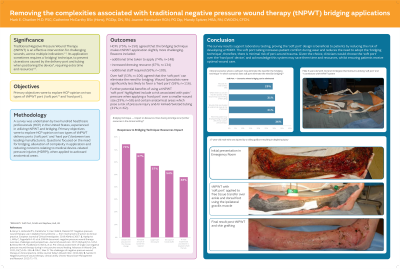Clinical Research
(CR-013) Removing the Complexities associated with Traditional Negative Pressure Wound Therapy (tNPWT) Bridging Applications

Traditional Negative Pressure Wound Therapy (tNPWT) is an effective interventions for challenging wounds, across multiple indications.1-3 Its application sometimes requires a ‘bridging’ technique, to prevent ulcerations caused by the delivery port and tubing when positioning the device,4 requiring extra time and resources.4,5.
Primary objectives were to explore HCP opinion on two types of tNPWT port (‘Flexible’ and ‘Hard’).
Methods:
A survey was undertaken by 200 healthcare professionals (HCP) in the United States, experienced in utilizing tNPWT and bridging. Questions focused on the need for bridging, alleviation of complexity in application and reducing concerns relating to medical device-related pressure injury (MDRPI), when applied to awkward anatomical areas.
Results:
HCPs (75%; n=150) agreed that the bridging technique makes tNPWT application slightly more challenging. Reasons included: additional time taken to apply (74%; n=148), increased dressing resource (67%; n=134) and additional staff required (50%; n=100). Over half (53%; n=106) agreed that the ‘Flexible Port’ can eliminate the need for bridging. Wound Specialists were significantly less likely to favour a ‘Hard Port’ (58%; n=116).
Discussion: Further potential benefits of using a tNPWT ‘Flexible Port’ highlighted include a risk associated with pain/pressure when applying a ‘Hard Port’ over a smaller wound size (29%; n=58) and certain anatomical areas which pose a risk of pressure injury and/or kinked/twisted tubing (31%; n=62).

.jpeg)